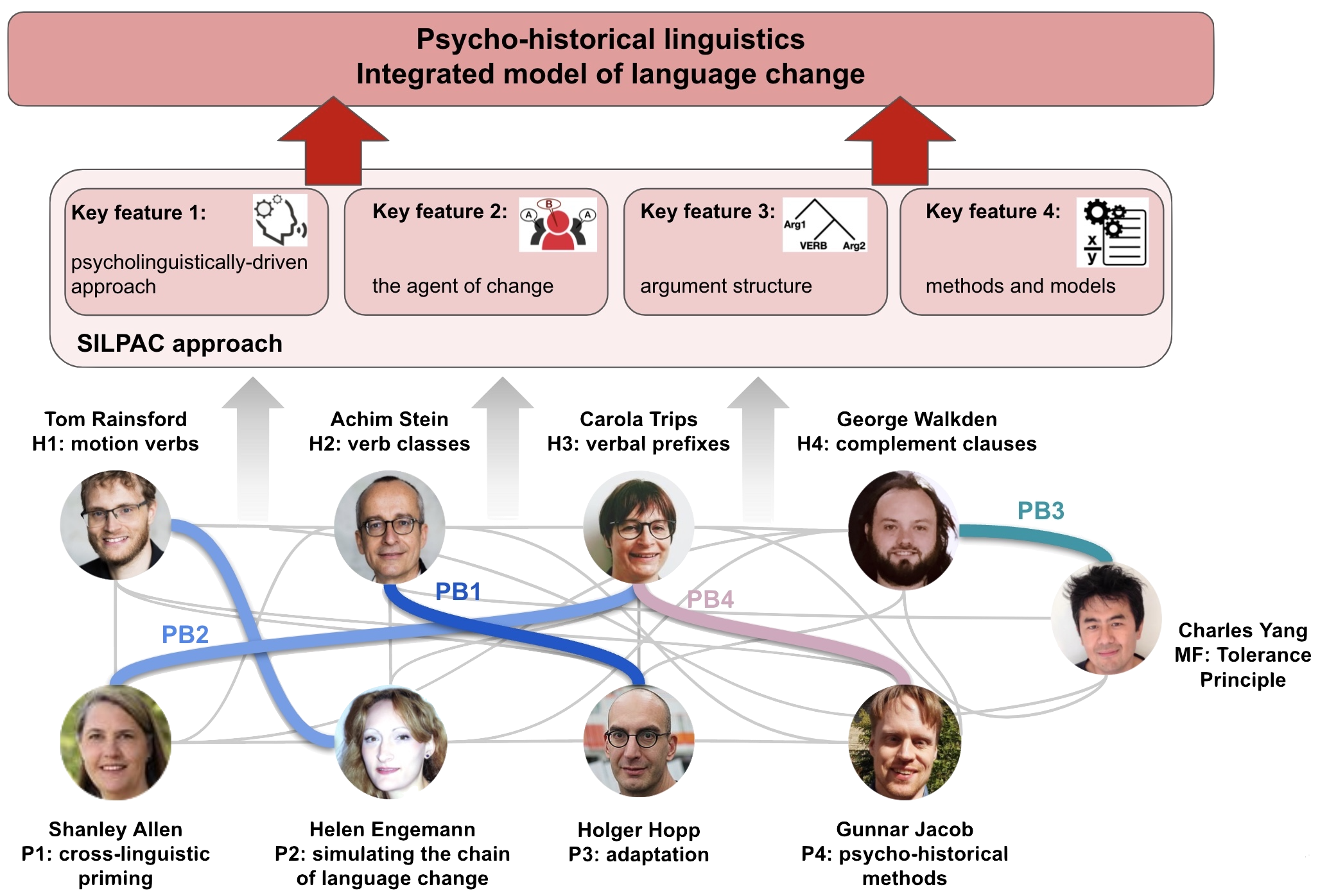Welcome to the SILPAC website!
Structuring the Input in Language Processing, Acquisition and Change (SILPAC) is a Research Unit of the Deutsche Forschungsgemeinschaft (DFG, FOR 5157) funded for four years (2022-). See the DFG database entry and the DFG press release.
Starting in 2022, 8 research projects in 5 German universities and Mercator Fellow Charles Yang (University of Pennsylvania) will create structures of interdisciplinary linguistic research in which researchers specialised in the two fields of historical linguistics (H) and psycholinguistics (P) closely collaborate with the goal of providing an empirically and theoretically well-grounded explanation of the links between language processing, acquisition and change, informed by mathematical modelling (M).

We assume that changes in language processing in the individual, which are consequences of changes in the structure of the input, have a potential for lasting change via intergenerational transmission in acquisition. Hence, research in SILPAC is anchored in the structure of the input and sees psycholinguistics as the ‘missing link’ in theories of language change. SILPAC is premised on the working hypothesis that the processes and mechanisms of change at the individual level and at the speech community level are fundamentally similar or even identical.
From this assumption, two approaches to the combined study of change and processing follow.
-
First, in the individual projects historical linguists and psycholinguists study change with complementary methods, working with historical texts and lab-based experiments, respectively.
-
Second, in project P4 and the Project Bridges (PB), historical linguists and psycholinguists study change using comparable methods, applying, e.g. priming and adaptation as mechanisms of learning and change to the same phenomena in historical texts and in experiments.
